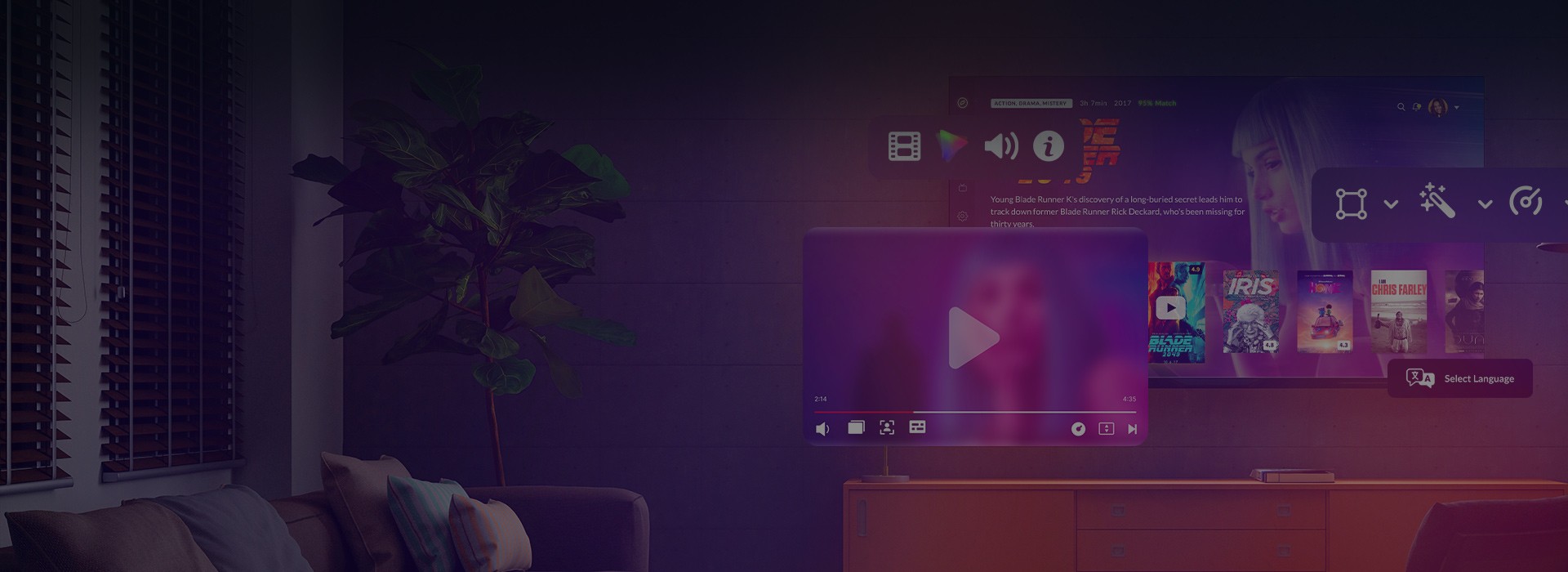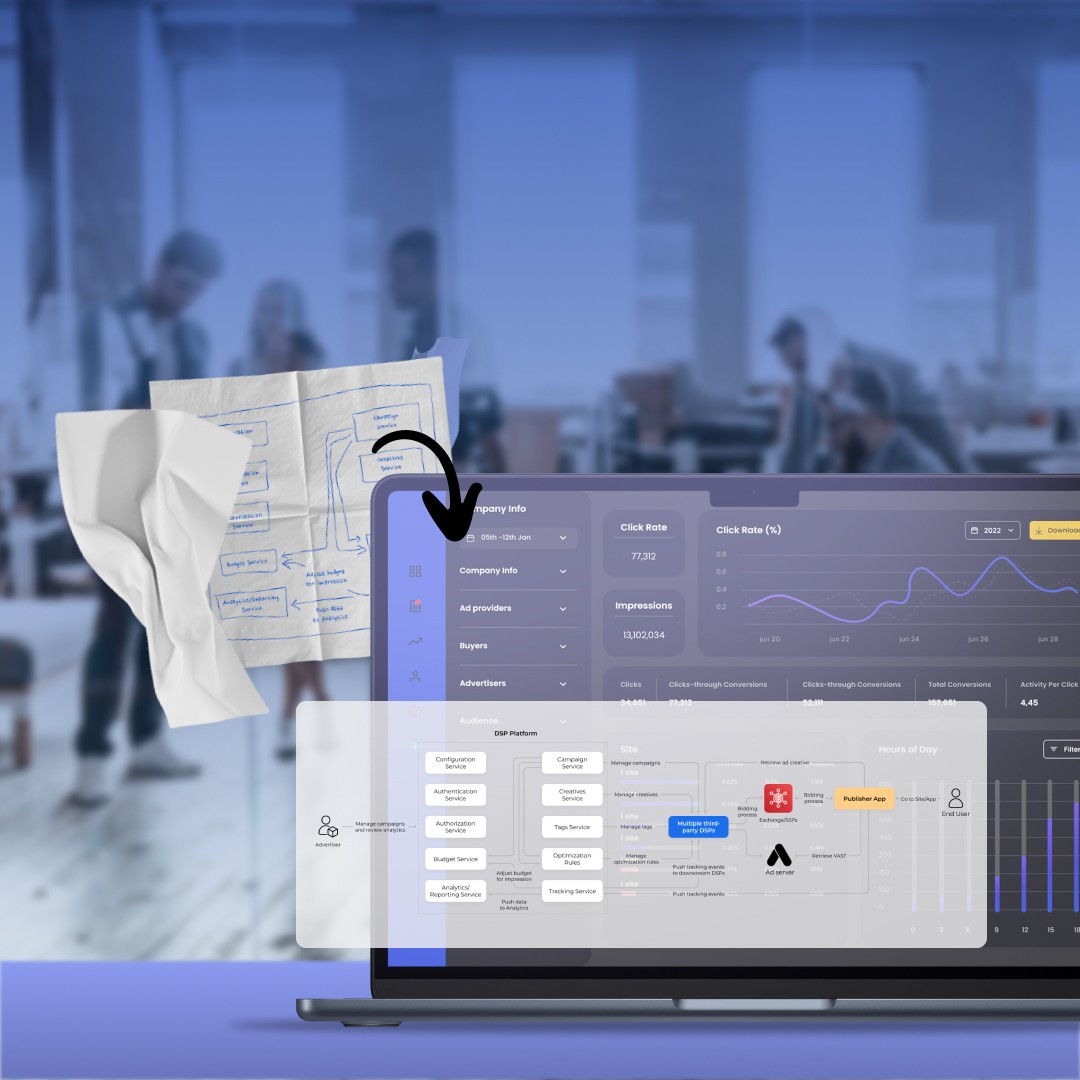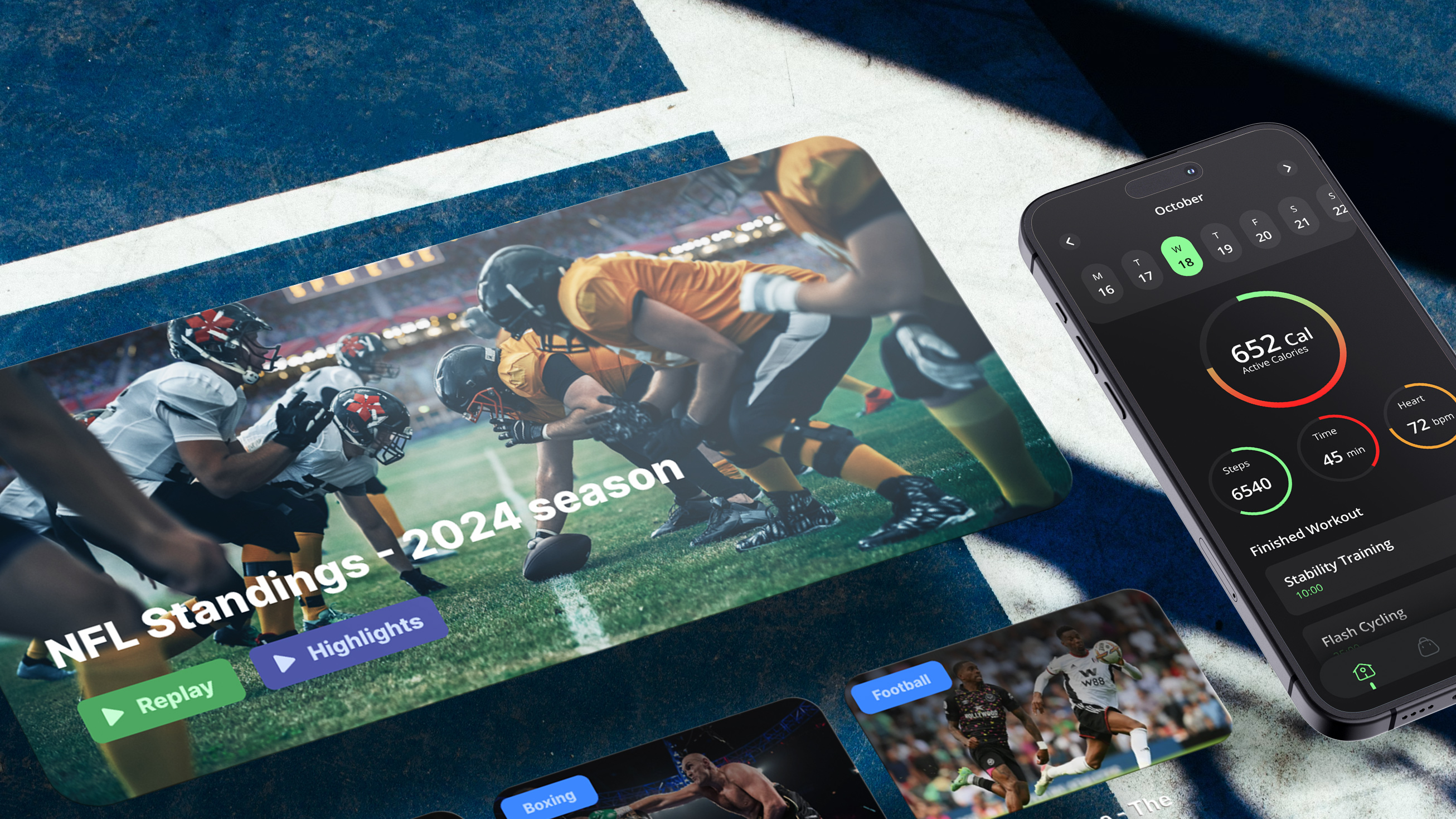OTT and CTV are often used interchangeably — but they shouldn’t be. These terms refer to distinct concepts in the video streaming ecosystem, and understanding their differences is key for any media company looking to optimize its content delivery and advertising approach.
Let’s break down what each term means and how they fit into the broader picture of modern video consumption.
OTT and CTV explained
The difference between OTT (Over-the-Top) and CTV (Connected TV) starts with how content is delivered and consumed.
OTT is a method of delivering video content over the internet without relying on traditional broadcast, satellite, or cable systems. Netflix, Hulu, and Disney+ are examples of OTT services. You can watch them on your phone, laptop, tablet — or your TV.
CTV refers specifically to internet-connected TV devices that stream video. These include Smart TVs, game consoles like PlayStation or Xbox, and dedicated streaming devices such as Roku, Apple TV, or Amazon Fire TV.
To put it simply: OTT is the service, and CTV is the device.
So, if you’re watching “Stranger Things” on Netflix via a Roku device connected to your TV, Netflix is the OTT platform, and Roku is your CTV.
Where they overlap — and where they don’t
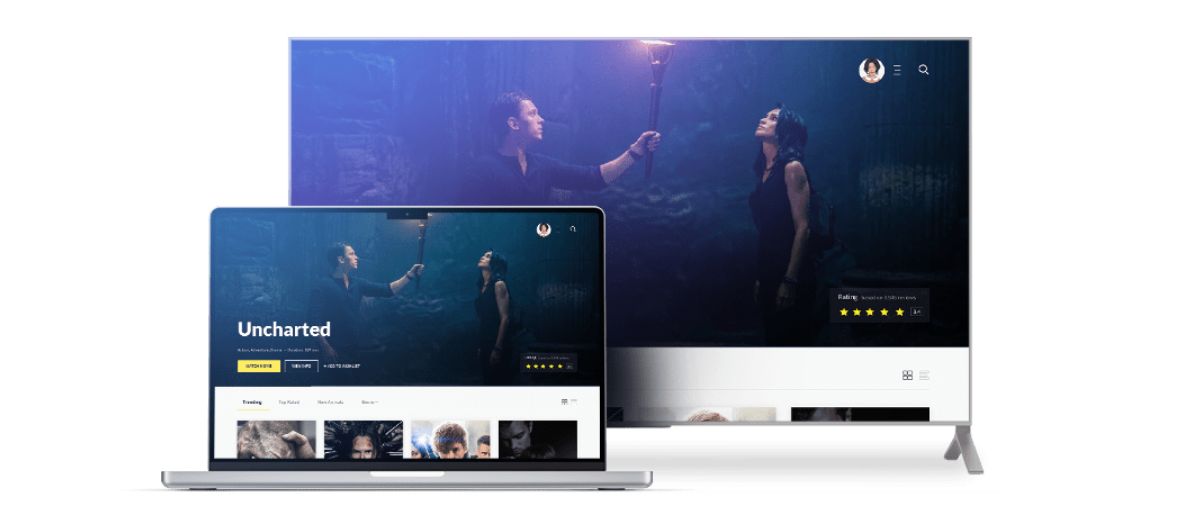
Despite being different in nature, OTT and CTV intersect in significant ways. Both bypass traditional TV delivery and instead rely on the internet. They’re core to how video is consumed today-on-demand, across devices, and with more user control.
At the same time, there are nuances that set them apart:
Similarities
- Internet-based delivery, avoiding cable or satellite infrastructure.
- Support for advanced advertising formats like targeting and real-time analytics.
- Work together — OTT content is often delivered through CTV devices.
- Empower user choice and flexibility.
Pros and cons of each approach
Understanding the strengths and trade-offs of OTT and CTV helps in selecting the right distribution and monetization model. Let’s start with OTT.
OTT: flexibility with a cost
OTT platforms offer exceptional reach. Audiences consume content across phones, tablets, laptops, and Smart TVs. It’s an agile ecosystem where you can personalize viewing experiences and implement interactive features like user profiles, recommendations, or content bookmarks.
But with flexibility comes complexity. Delivering consistent performance requires scalable infrastructure and efficient cloud resource management. Poor technology choices or underestimating traffic spikes can lead to buffering, downtime, or high delivery costs.
Security is another concern. OTT apps are vulnerable to data breaches, piracy, and privacy violations, especially on personal devices. Add to that the fragmented regulatory environment — some countries restrict OTT operations due to licensing laws or content policies.
Another factor to consider is audience segmentation. OTT services should accommodate diverse content preferences, languages, and subscription models, which adds to the complexity of backend logic and analytics.
Want to learn more about scalable and secure OTT solutions?
See how our custom approach helps media businesses launch high-performing, cross-platform apps with smart monetization.
CTV: streamlined and stable
Compared to OTT, CTV offers a more focused technical environment. Fewer device types and more standardized platforms mean easier testing and optimization. Developers don’t have to account for dozens of screen sizes and OS variations, making the user experience more predictable.
CTV also provides high-quality video and sound. Most CTV devices support HD or 4K streaming, and watching on a big screen often means more immersive, cinematic experiences.
Still, limitations exist. CTV relies heavily on stable, high-speed internet. Hardware differences across TV brands or generations can result in performance issues. And like any connected device, CTVs are also vulnerable to security threats, especially given the presence of cameras and microphones in some models.
Additionally, the user interface is more rigid compared to OTT. CTV apps must adhere to strict design guidelines set by platform owners, leaving less room for UX experiments or branding differentiation.
Advertising opportunities: OTT vs CTV
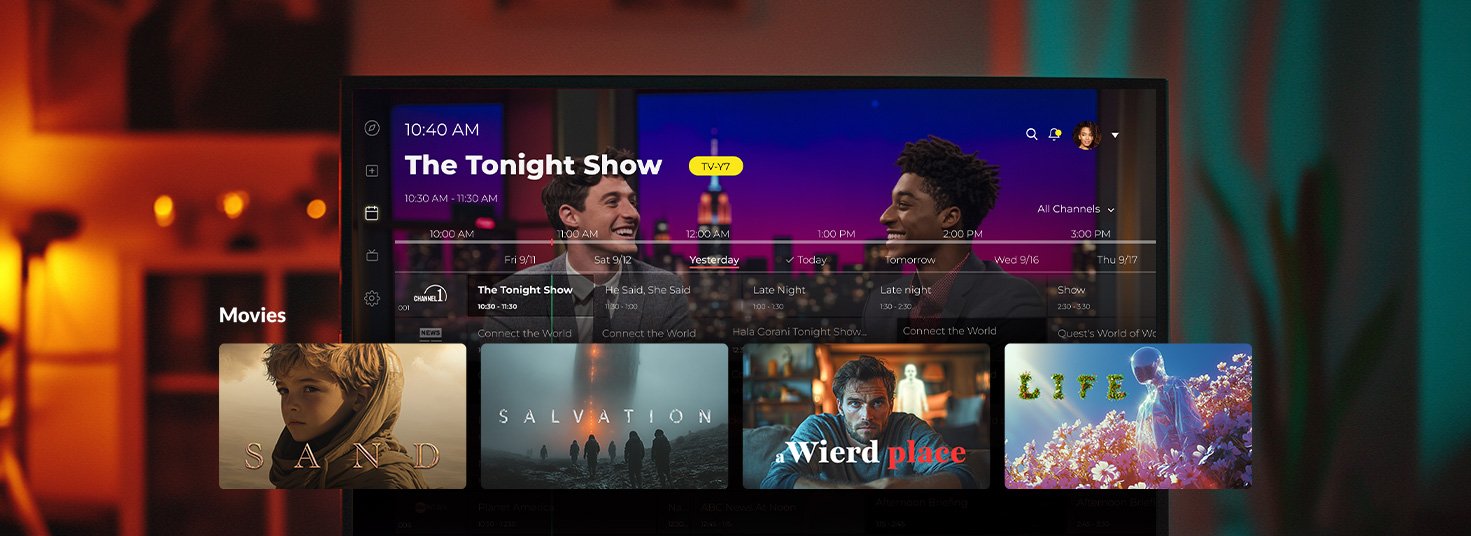
These platforms open up new monetization channels with digital advertising that is smarter, more targeted, and measurable. While they often go hand-in-hand, their dynamics vary depending on the device and delivery method — a distinction commonly explored in the context of CTV vs OTT advertising.
Across both technologies, advertisers can:
- Deliver targeted messages based on demographics or viewer behavior.
- Leverage real-time reporting and view-through metrics.
- Optimize ad frequency and placement with advanced analytics.
Here’s how they compare in more detail:
OTT advertising
- Includes ads served through streaming apps across all internet-connected devices.
- Offers multiple formats — pre-roll, mid-roll, skippable video, display overlays.
- Flexible but often consumed passively — users may skip, mute, or multitask.
- A subset of OTT ads, delivered specifically on connected TVs.
- Typically full-screen, non-skippable, and highly viewable.
- Viewed in a “lean-back” environment, leading to better ad completion rates.
Case in point: video-on-demand content monetization
One of our clients — a European telecom operator — needed to monetize their VOD content effectively. We developed a custom advertising module enabling dynamic ad placement, targeting, scheduling, and performance analytics. This helped them build a robust monetization strategy within their OTT service without relying on third-party tools.
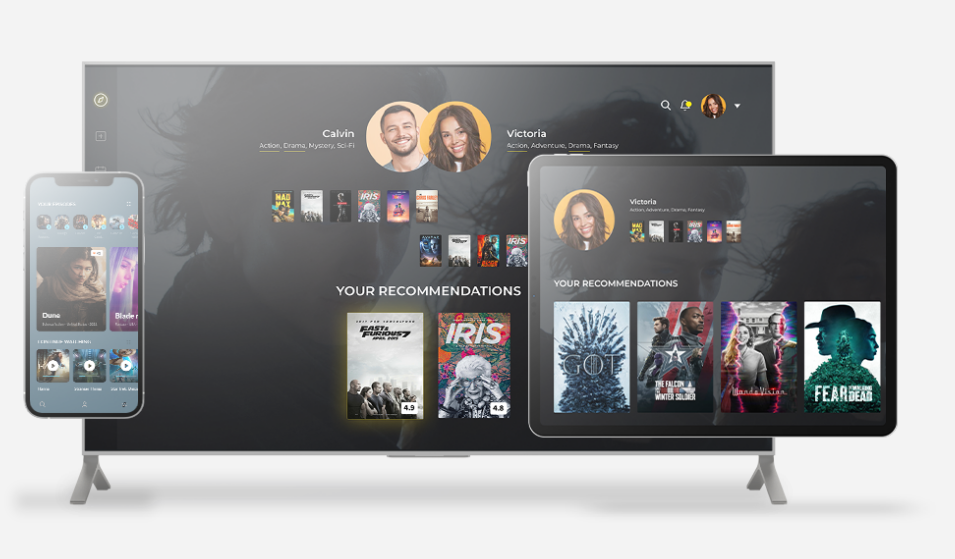
Where Oxagile comes in
We support businesses in both OTT and CTV segments by building tailored video and AdTech solutions. Our expertise covers:
- Developing and integrating custom video players for multi-platform OTT apps.
- Enhancing CTV platforms with smart ad insertion and precise targeting.
- Automating the selling of TV, digital, and OTT inventory via data-driven marketplaces.
The third point can be illustrated with one of our recent projects — a data-driven AdTech marketplace we developed for a data solutions provider aiming to connect broadcasters and advertisers within a single platform.
The solution featured dedicated seller and buyer modules, where broadcasters acted as sellers of ad inventory and advertisers as buyers. It also included a customer care module to support campaign management. The platform enabled streamlined ad sales, real-time performance tracking, and flexible pricing based on third-party ratings such as Nielsen or Comscore — a solid use case within the broader context of CTV vs OTT examples.
Our team also works on integrating SSP and DSP platforms, enabling programmatic ad transactions that meet market standards and drive ROI for both advertisers and publishers.
Whether you’re a content provider, broadcaster, or media company, the right technical foundation can make a big difference in your monetization potential — no matter which streaming model you rely on.
Conclusion
The OTT vs CTV discussion isn’t about choosing one over the other — it’s about understanding how they complement each other within the broader digital video landscape. They’re components of a single, evolving ecosystem. Knowing how they interact, what they offer, and where their strengths lie is critical for making informed business decisions.
If your goal is to deliver high-quality content while maximizing revenue from advertising, embracing both technologies — with the right OTT apps development partner — could be the smartest path forward.

